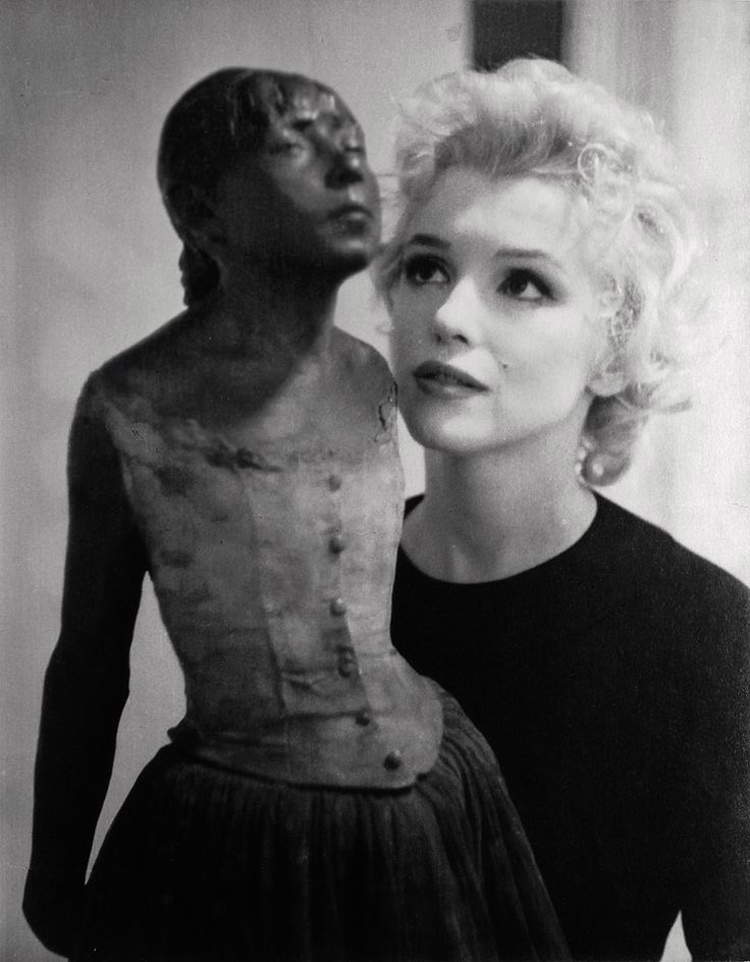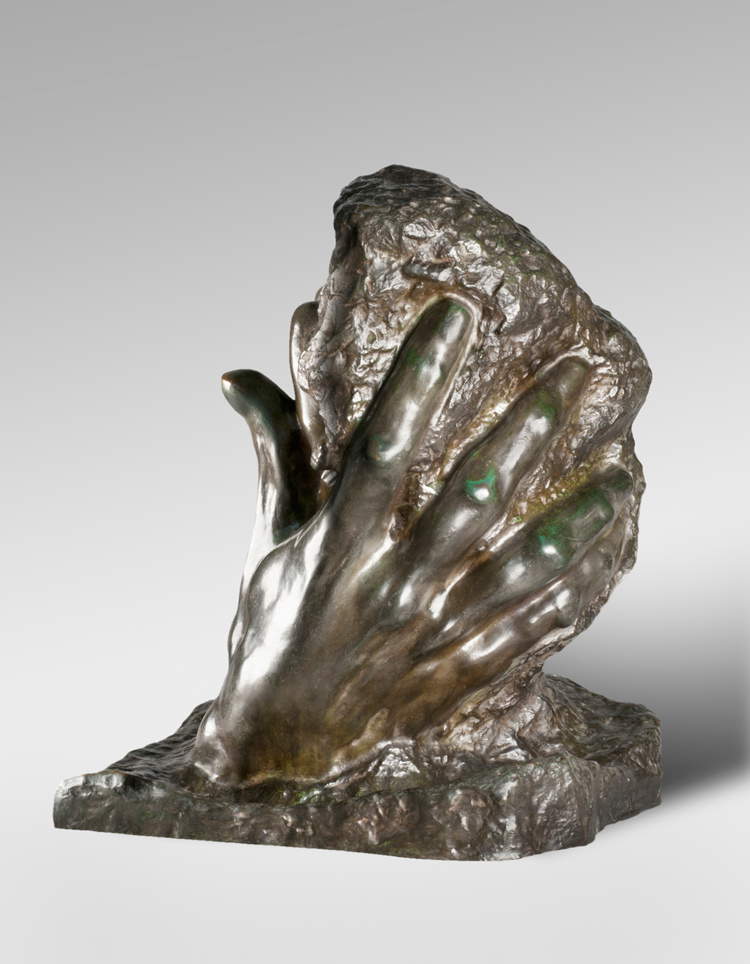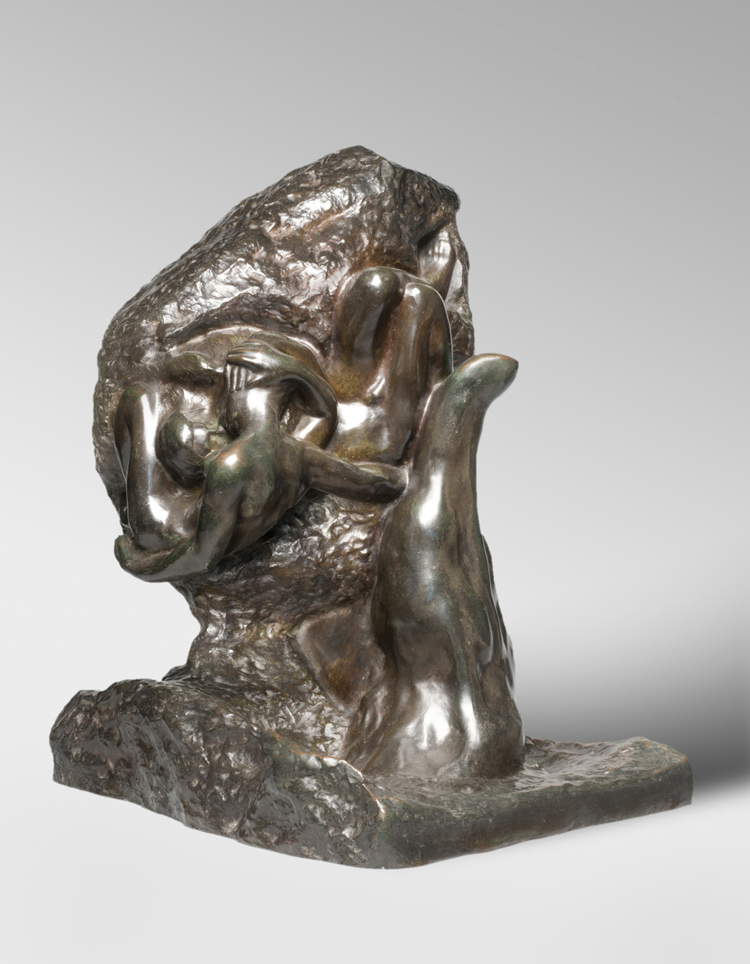Monica Bowen, art historian and teacher, dedicated an article on her blog Alberti’s Window to the relationship Marilyn Monroe had with art. You can read it in Ilaria’s translation here. Here is the original link.
Those who follow my blog may have noticed that in recent months I have been reading up on stars and famous people of the mid-twentieth century. Of all the people I have studied so far, Marilyn Monroe stands out because of her remarkable interest in the Western artistic tradition. When I discovered this, I was very surprised, because I never thought Marilyn would be interested in visual art.
 |
| Marilyn Monroe with a Degas sculpture, Petite danseuse, at the home of film producer William Goetz |
As an art historian and teacher, I was especially amused reading about her experience as a participant in an art appreciation course (one biographer writes that the course was held at UCLA University of California, Los Angeles, but her autobiography states that the course was held at the University of Southern California). In her autobiography, Marilyn shares her opinion of the teacher and the art appreciation course:
He was one of the most exciting people I had ever met. He talked about the Renaissance and made it sound ten times more important than the greatest epic of the Studio’s. I absorbed everything he said. I knew Michelangelo, Raphael, and Tintoretto. Every day a new genius to learn about At night, lying in bed, I longed to live in the Renaissance. Surely I would be dead by now, but perhaps it would be worth it.
I was moved to learn about the powerful impact this teacher had on Marilyn Monroe. As an art teacher, I can only hope to be so inspiring! After the course, Marilyn continued her interest in art, and I was particularly amused by the anecdote she told about the time Marilyn read a disappointing book on Goya (which, fortunately, did not impede her passion for the latter’s art).
To encourage her artistic knowledge and experiences, she attended exhibitions le of art. She particularly adored Rodin and visited the exhibition devoted to the artist held in 1955 at the Metropolitan Museum of Art. It is documented that she was especially attracted to Pygmalion and Galatea and The Hand of God.
  |
| Auguste Rodin, The Hand of God (molded in 1898, cast in 1925; bronze, 67.9 x 44.4 x 54.6 cm; Paris, Musée Rodin) |
In fact, Marilyn liked The Hand of God so much that in 1962 she bought a bronze statue of it (similar to the one shown above), for more than a thousand dollars. It was the last year of her life and her health was already failing. She immediately took the statue to her psychiatrist and engaged in a bizarre and troubling conversation during which she kept asking the doctor what he thought that work of art meant. I think it is very interesting that Marilyn, almost at the end of her difficult life, had an affinity with this particular sculpture: the Rodin Museum states that this hand was used as a study for the artist’s own Bourgeois de Calais, a work in which the hand gestures indicate leave and suffering.
Marilyn also collected other pieces of art. I am particularly intrigued by the fact that in July 1955 she had purchased a bust of Nefertiti for her suite at the Waldorf-Astoria Hotel in New York (although I cannot find any information as to whether this bust was authentic or was a copy of the famous bust found in the Neues Museum in Berlin). As an entrenched symbol of female beauty, I find it intriguing that she was attracted to an idealized image of Egyptian beauty.
Does anyone know what happened to Marilyn’s art collection? Was it dispersed with her other possessions?
Warning: the translation into English of the original Italian article was created using automatic tools. We undertake to review all articles, but we do not guarantee the total absence of inaccuracies in the translation due to the program. You can find the original by clicking on the ITA button. If you find any mistake,please contact us.